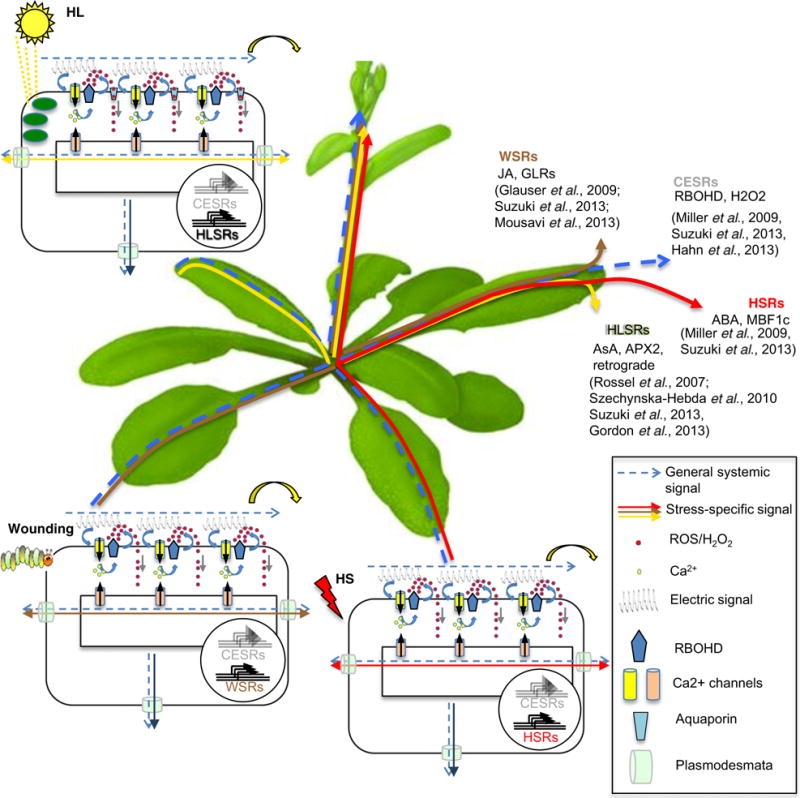Figure 3.

Model of possible propagation of general and stress-specific systemic signals. Local stress stimuli triggers changes in membrane potentials, increases in cytosolic [Ca2+] and activation of RBOHD-mediated oxidative burst leading to reactive oxygen species (ROS) accumulation, i.e. trio signaling. The association between the signals generates a wave that rapidly spreads throughout the plant in an auto-propagating manner, traversing through the apoplast outside the cell and/or symplastically through PD. This initial signaling wave acts as a priming signal, which is required, but not sufficient for systemic acquired acclimation (SAA). The priming wave activates the core environmental stress response genes (CESRs). Following the general signaling wave, depending on the type of stress, a second wave of systemic stress-specific systemic signaling starts, activating stress-specific genes and cellular mechanisms that facilitate SAA against the same type of stress that triggered the initial response. APX2, ascorbate peroxidase; GLR, GLUTAMATE RECEPTOR-LIKE channels; JA, jasmonic acid; AsA, ascorbic acid; RBOHD, respiratory burst oxidative homolog D; H2O2, hydrogen peroxide; HL, high light; HSR, heat stress response; HS, heat stress; WSR, wounding stress response; HLSR, high light stress response; ABA, abscisic acid; MBF1c, multiprotein bridging factor 1c, PD, plasmodesmata.
